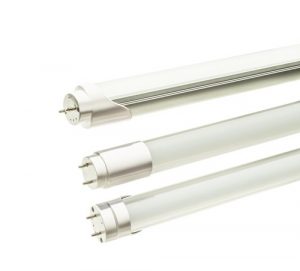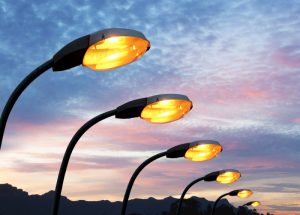Different Types of Local Dimming Technologies in LED TVs in India
When you’re out to buy a TV there are so many things to consider—size, resolution, audio quality, HDR availability and so on. The list of features to consider is overwhelming. With so many things to consider, you are unlikely to consider something called local dimming. But if you simply choose to overlook local dimming feature you might miss a trick. In this article, we will understand what local dimming is, types of local dimming, it’s significance and finally look into the issues associated with it.
What is Local Dimming?
Current TVs that have LCD screens do not have contrast ratio that could match with what was offered in plasma TV of the past, or the present-day OLED TVs. And because of it, images displayed doesn’t quite manifest the colour depth and three-dimensionality possible with other display technologies. The contrast of LCD and LED TVs peaked out at 5000:1 for some years now, and thereby blacks on LED TVs are at the best, very dark grayish in colour.
It’s the tiny LED lights that shine behind the main LCD panel on most of the modern LED TVs give pixels their colour. But at times there is light bleeding, creating a halo around the dark regions of the screen. Therefore, local dimming was developed to specifically rectify this issue pertaining to LED LCD TVs. The main idea behind local dimming is to dim regions of the screen that should be dark (for example shadow of a character) and maintaining the brightness of the brighter parts (for example a well-lit window), so that apparent contrast is improved.
In other words, local dimming is meant to improve the contrast ratio by making black look darker. So, it’s while watching TV inside the dark room when you are most likely to appreciate local dimming technology. Because watching TV in a well-lit room otherwise might lead TV to bounce off the incident light on it causing reflections on screen and you won’t really notice the usefulness of local dimming in a bright room.
How Local Dimming Works?
With local dimming technique in place, LED display is grouped into individual areas, technically called zones. These zones are dimmed or brightened independently of each other. With many small zones, it’s more convenient to brighten specific parts of the scene that are supposed to be bright, while dimming the parts which are supposed to be dark. This way light bleeding into the darker portion is minimized. Typically, during local dimming, only a few large zones are dim while remaining zones remain well illuminated.
Based on the type and size of the TV, there could be tens of such zones or even more. Unfortunately, TV manufacturers do not disclose the exact number. But by looking at how much of the display space is brightened, you would get a fair idea about the size and number of zones.
Though the term local dimming is being used frequently these days, especially in the parlance of TV marketing, but not all local-dimming methods are created equal. Let us look into details of different type of local dimming technologies that are present inside the LED TVs.
Edge-lit Dimming
This is the most common type of dimming method employed by TV manufacturers. As evident from the name, in edge-lit technique, all the LEDs sit on the edge of the TV, facing the center of the screen. In this case, however, local dimming becomes a loosely used term because although the TV dim areas of the screen, but the dimming occurs on larger than required area resulting in inconsistent illumination.
But when implementation goes correct, you’ll surely notice visible improvement in picture clarity though not as much as in full array dimming (we’ll come to that shortly). TVs coming with wide color gamut would look even better with edge-lit dimming.
And there are various ways to implement edge-lit dimming which could be: just right and left, just top and bottom or along all four sides of the screen. Performance amongst them would vary and the models coming on all four sides would perform the best.
Edge-lit local dimming is the most widely used technique because it is easier to implement—needing fewer LEDs than other dimming methods—making it possible to design thinner and energy-efficient television.
Frame Dimming
Some manufacturers tweaked edge-lit local dimming into what they call frame-lit dimming or just frame dimming. The difference between conventional edge-lit dimming and frame dimming is that frame dimming has lesser number of zones. Also, in frame dimming instead of modifying illumination for a specific area of the screen, the lighting of the complete frame of the display is altered. So, it is less powerful then edge-lit dimming but more cost-effective for TV manufacturers.
Full Array Dimming
This is crème-de-la-crème of local dimming. Here the LED lights sit behind the screen, not just on the edges alone but completely. Here an array of individual LEDs is fitted behind the LCD panel, all pointing out through the screen.
These LEDs are being controlled by dividing them into zones. As mentioned earlier, the size and number of zones vary from model to model.
Although zoning in full-array local dimming does a decent job in improving contrast, when the objects are smaller than the zone, like for example stars in the night sky, this dimming method loses some of its effectiveness. But despite that, full-array backlit local dimming when correctly implemented produces best images that you can get out of an LCD panel. Also, to get most out HDR content it is highly recommended to go for TV coming with full array dimming.
Full array local dimming is expensive and that’s why this method is usually used only in the top-of-the-line TV models.
Micro Dimming
Just as frame dimming is a cheaper version of edge-lit dimming, micro dimming is a cheaper version of full-array dimming. In fact, in micro dimming, it doesn’t actually dim the backlight. Instead, it varies the contrast of different zones in the frame. Pure TV tech geeks often subjectively disapprove of this because it transmutes the original content. So full-array dimming is better than micro dimming any day.
Global Dimming
This is the final dimming method. Technically, this isn’t really “local” dimming rather just “dimming”. Here entire image gets darker when running dark scenes and remain bright while running bright scenes. Or to put it simply the entire backlight functions as one single light. That’s why “global” dimming. This is the easiest method of dimming and usually used in low-end television models.
Global dimming becomes noticeable on several instances like for example when the scene contains a full black image (fade-out when the movie ends, but before the credit pages start rolling) the display will shut off completely, giving the impression that TV has some really nice black levels. This is an illusion, however. Just as it moves to other scenes with objects in it, LED lights turn on and the black level is no more that rich and dark—uncovering real contrast of the television.
Problems Associated with Dimming
Though local dimming can artificially improve the contrast of television and would really make darker scenes more enjoyable experience, there are some small problems which are associated with dimming. First one is light blooming wherein light disperses from the bright objects into darker space. This becomes noticeable when you’ll see a scene of the comet flying in the dark background brimming with stars. Also, sometimes an unintended portion of the imagery can get dimmed because dimming works zone wise. Some users may even notice fluctuation of brightness on the screen on account of full array dimming.
Conclusion
Local dimming is an attempt to improve the depth of the blacks displayed on the screen by dimming the LED backlighting. Local dimming preference can be subjective. It would surely be appreciated by the people who crave for crisp clarity when watching dark scenes on LED television. But there are some downsides as mentioned before and therefore it may not suit select set of viewers.
About the Author:
Hussain Kanchwala is an Electronics Engineer from University of Mumbai. As an Analyst at BijliBachao he keeps a tab on latest technologies in gadgets and appliances, tracks businesses of white goods companies and monitors the consumer behavior. With a background in engineering, penchant for detail, and flair for writing he regularly write reviews about brands and their products. More from this author.






